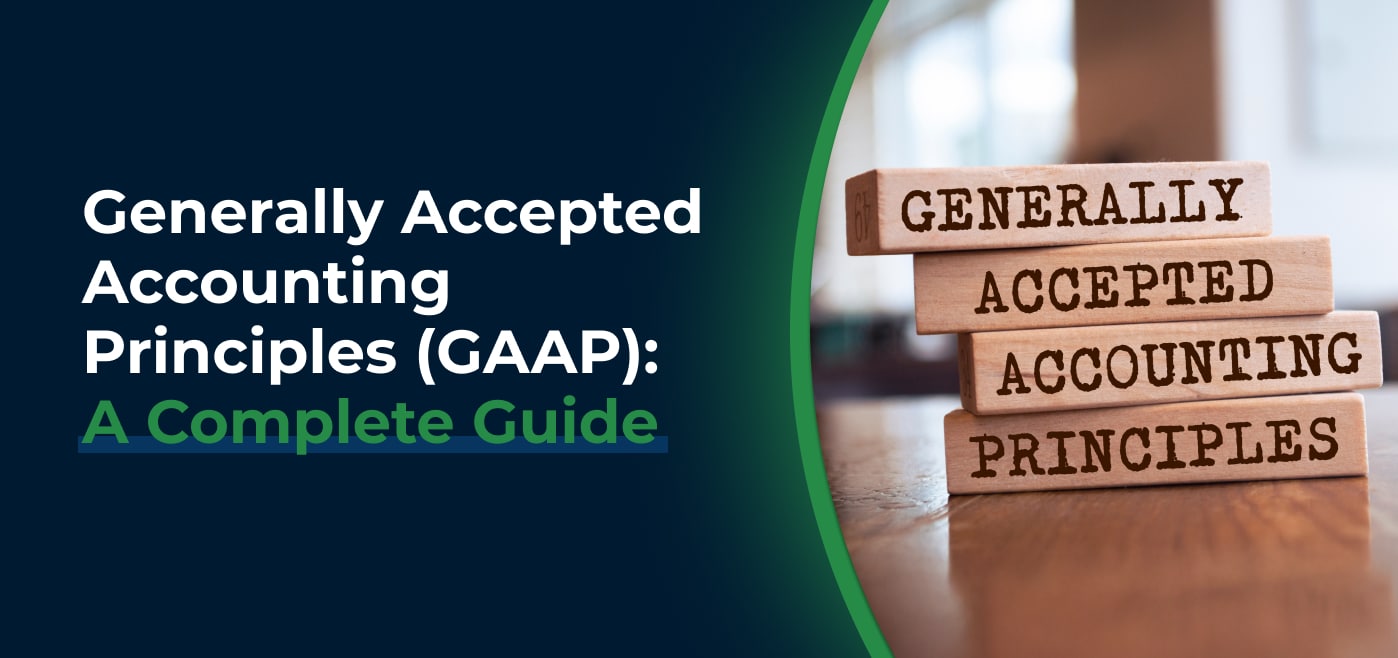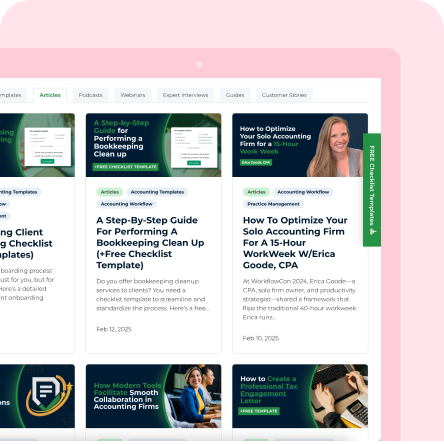Ever wonder why you can compare the financial statements of two different companies so easily? It is not just a coincidence or neat bookkeeping. There is a system behind it, one that keeps every accountant, firm, and investor speaking the same financial language.
In the United States, this system is known as Generally Accepted Accounting Principles (GAAP). It is the foundation of consistency and trust in financial reporting, shaping everything from how revenue is recorded to how statements are read.
In this guide, you will unpack what GAAP really is, why it matters, and how it shapes how you work daily as an accounting professional.
What Is GAAP?
In simple terms, Generally Accepted Accounting Principles are the rules that keep financial reporting consistent across the board. They guide how you record income and expenses, value assets, and present financial statements so anyone reading them (from investors to regulators) can understand what they’re looking at.
GAAP is established and maintained by the Financial Accounting Standards Board (FASB), an independent, nonprofit organization recognized by the Securities and Exchange Commission (SEC) as the authority on U.S. accounting standards. The FASB’s role is to develop and update these principles in response to new business practices, economic changes, and evolving stakeholder needs.
Why GAAP Matters in Accounting
Trust in accounting comes from doing things the same way, every time. GAAP gives you that foundation, the standards that make your financial statements reliable and credible. Here’s why it matters:
a. It keeps financial statements consistent
When everyone follows the same rules, it becomes easier to compare results across companies, industries, or reporting periods. That consistency helps you and your clients make sense of the numbers quickly.
b. It builds credibility and trust
GAAP-compliant reports signal professionalism and integrity. They tell investors, lenders, and regulators that your firm values transparency and accuracy, qualities that strengthen relationships and reputation.
c. It helps prevent errors and fraud
Standardized rules for recognizing revenue, recording expenses, and valuing assets make it harder for mistakes or manipulations to slip through unnoticed.
d. It reduces compliance risks
Staying aligned with GAAP helps you meet SEC and IRS expectations, lowering the chances of facing penalties or audit surprises.
e. It supports smarter decisions
When financial data is accurate and comparable, you and your clients can plan, forecast, and analyze with confidence. Better data leads to better strategy.
The 10 Key Principles of Generally Accepted Accounting Principles (GAAP)
GAAP is built on ten core principles that guide how financial information should be recorded, reported, and interpreted.
1. Principle of Regularity
You are expected to follow all established accounting rules and regulations consistently. This principle reinforces the idea that GAAP is not optional but a professional obligation.
2. Principle of Consistency
Accounting methods and procedures should remain consistent from one reporting period to the next. If a change is necessary, it must be disclosed and justified, ensuring stakeholders can still compare financial results over time.
3. Principle of Sincerity
Accountants must present an honest and impartial view of a company’s financial situation. The goal is to show the true financial picture, not one that flatters or conceals.
4. Principle of Permanence of Methods
Once an accounting method is chosen, it should be applied consistently. This stability allows for meaningful comparison across multiple periods.
5. Principle of Non-Compensation
All aspects of a company’s performance, both gains and losses, should be reported without offsetting one against another. Transparency means showing the full picture, not a net result that hides details.
6. Principle of Prudence
When in doubt, choose the least likely option to overstate income or assets. This principle encourages caution and prevents overly optimistic financial reporting.
7. Principle of Continuity
Financial statements should assume that the business will continue to operate in the foreseeable future. This assumption affects how assets and liabilities are valued.
8. Principle of Periodicity
Business activities should be reported in specific, consistent time periods, monthly, quarterly, or annually. This ensures timely reporting and accurate performance tracking.
9. Principle of Full Disclosure
The statements or accompanying notes must fully disclose all relevant financial information. Transparency builds trust and ensures that stakeholders have the context they need to interpret results.
10. Principle of Utmost Good Faith
All parties involved in financial reporting are expected to act honestly and in good faith. This principle reinforces ethics as the foundation of every accounting decision.
Together, these ten principles form the ethical and procedural backbone of accounting practice in the United States.
GAAP vs. IFRS
While GAAP is the standard used in the United States, many other countries follow the International Financial Reporting Standards (IFRS). Both frameworks share the same goal, but they differ in how they achieve it.
GAAP is rules-based, meaning it provides detailed guidance on how to handle specific accounting scenarios. IFRS, on the other hand, is principles-based, which gives you more flexibility to apply professional judgment. This difference often means GAAP reports can be more prescriptive, while IFRS reports may emphasize interpretation within broader guidelines.
In the U.S., publicly traded companies are required to follow GAAP. IFRS is used in over 140 countries, including the United Kingdom, Canada, and much of the European Union. Understanding both frameworks is important if you work with international clients. It helps you interpret financial statements prepared under different standards and advise clients who operate or invest abroad.
Even though GAAP and IFRS are not identical, their core objectives align. Both aim to provide investors, regulators, and other stakeholders with clear, reliable, and comparable financial information.
GAAP vs. Non-GAAP Reporting
If you’ve ever looked at a company’s financial report and seen terms like “adjusted earnings” or “EBITDA,” you’ve seen non-GAAP reporting in action. GAAP sets the official standard. Non-GAAP, on the other hand, steps outside that rulebook.
Non-GAAP reporting refers to financial information that goes beyond what is required under Generally Accepted Accounting Principles (GAAP). Companies use it to highlight aspects of their performance that they believe GAAP numbers don’t fully capture. It is especially common in investor reports, earnings calls, and management discussions, where businesses want to show how their operations are performing without the impact of unusual or one-time events.
Common examples of non-GAAP adjustments include removing one-time costs such as restructuring expenses, acquisition costs, or asset write-downs. Companies might also report figures like EBITDA (earnings before interest, taxes, depreciation, and amortization) to show profitability before non-operational factors are considered. These adjustments can help stakeholders understand how the business performs under normal conditions, separating ongoing operations from temporary fluctuations.
However, non-GAAP reporting is not governed by a single set of standards, which means companies can define and present these metrics differently. Without clear reconciliation to GAAP figures, non-GAAP results can create inconsistencies or even paint an overly favorable picture of financial performance.
For you, understanding both approaches is essential. GAAP remains the authoritative standard for compliance, auditing, and tax reporting, while non-GAAP metrics often shape how investors and management view performance. Knowing how to interpret and reconcile the two allows you to provide more accurate financial analysis, advise clients effectively, and ensure your insights align with both compliance requirements and business realities.
Ensuring Compliance with GAAP
GAAP compliance doesn’t happen by chance; it’s the result of solid systems, ongoing education, and reliable tools that keep your reporting accurate and transparent.
Internal controls and audit procedures
Strong internal controls are your first line of defense. Set up clear approval processes, regular reconciliations, and periodic audits to catch inconsistencies early. Routine reviews of journal entries, account balances, and supporting documentation help maintain accuracy and reduce the risk of errors or fraud.
Training staff on standards
Accounting standards evolve, and keeping your team informed is essential. Ongoing training ensures everyone understands the latest FASB updates and how they apply in real situations. When your staff knows the “why” behind each standard, compliance becomes easier and more consistent.
Using accounting software to maintain compliance
The right technology can make compliance effortless. GAAP-aligned accounting software helps standardize reporting, automate reconciliations, and maintain detailed audit trails. It also reduces manual errors and keeps your team focused on analysis rather than data cleanup.
Recommended:
GAAP in Practice: Implications for Advisory and Tax Work
When your clients’ books follow GAAP, everything else in your workflow becomes smoother and more reliable. Here’s how:
Financial advisory
Accurate, standardized financial data helps you give better advice. You can spot trends, assess profitability, and make informed recommendations without worrying about inconsistencies in how income or expenses were recorded. It’s easier to build forecasts and strategies that reflect a client’s true financial position.
Learn about Accounting Advisory Services.
Tax planning and deduction
GAAP ensures revenues and expenses are recorded in the correct periods, which directly affects taxable income. With properly aligned books, you can identify legitimate deductions, avoid timing errors, and ensure tax filings accurately reflect business activity.
Year-end close process
Closing the books is faster and cleaner when transactions are recorded according to GAAP throughout the year. You spend less time correcting errors or reconciling accounts, and more time analyzing results and preparing reports that stand up to scrutiny.
See the The Complete Year-End Accounting Checklist Guide
IRS audit risk
GAAP-compliant books create a strong paper trail that supports transparency and accuracy. If an IRS audit occurs, clear documentation and consistent methods make it easier to defend your reporting and reduce the risk of penalties.
Challenges and Common Misunderstandings
Even experienced accounting professionals run into challenges when applying GAAP consistently. Most issues don’t come from a lack of knowledge but from the small details that get overlooked in day-to-day work. Here are some of the most common problem areas to watch for:
Misuse of the cash basis when accrual is needed
Some businesses continue to record transactions only when cash changes hands, even when the accrual method would provide a more accurate financial picture. GAAP requires accrual-based reporting for most organizations, ensuring revenues and expenses are recognized when they occur.
Poor documentation for revenue recognition
Revenue recognition remains one of the most common pain points. It becomes difficult to justify when revenue should be recognized without clear documentation, such as contracts, milestones, or delivery confirmations. This can lead to timing errors and compliance issues during audits.
Inconsistent depreciation methods
Switching between depreciation methods without a clear rationale or documentation can distort financial results. Under GAAP, you must apply a consistent method over time unless a justified change is properly disclosed and explained.
Improper expense matching or cutoff errors
Expenses that are recorded in the wrong period can overstate or understate profitability. Following GAAP’s matching principle ensures that revenues and related expenses appear in the same reporting period, giving a more accurate reflection of performance.
Staying Up to Date With GAAP Changes
GAAP isn’t static. The Financial Accounting Standards Board (FASB) regularly issues updates to address new business practices, economic conditions, and regulatory changes. Staying informed ensures your firm remains compliant and that your financial reporting reflects the latest standards.
Here are a few ways to keep your knowledge current:
- Follow FASB updates.
Visit the FASB website to review recent and upcoming Accounting Standards Updates (ASUs). These updates include explanations, effective dates, and transition guidance.
- Leverage the AICPA.
The American Institute of Certified Public Accountants (AICPA) offers technical guidance, webinars, and continuing education courses on emerging standards and best practices.
- Use GAAP Guides and accounting publications.
Resources like The Journal of Accountancy and other accounting publications summarize changes and provide real-world application examples.
- Prioritize continuing education.
Regular CPE courses, workshops, and firm-wide training sessions keep your team aligned and up to date on the latest rules and interpretations.
Best Practices for Applying GAAP in Your Firm
Understanding GAAP is one thing. Applying it consistently across your firm is what really ensures accuracy, compliance, and efficiency. Here are a few best practices to help you embed GAAP standards into your everyday operations:
Standardize your reporting templates
Create firm-wide templates for balance sheets, income statements, and cash flow statements. When everyone uses the same format, it’s easier to maintain consistency and spot irregularities. Standardized templates also make reviews and audits faster and less error-prone.
Document your procedures clearly
Put your accounting policies and procedures in writing, from revenue recognition methods to expense classifications. Clear documentation helps train new staff, ensures consistency across teams, and provides a reference point when questions or discrepancies arise.
Review financials regularly
Don’t wait until year-end to catch mistakes. Schedule periodic reviews to verify that reports follow GAAP standards and reflect current business activity. Regular reviews make it easier to correct small errors early and maintain confidence in your reporting throughout the year.
Conclusion
GAAP is the heart of accurate and dependable accounting. It keeps financial information consistent, transparent, and credible, which clients rely on when they turn to you for advice and insight.
However, understanding GAAP is only half the work. The real impact comes from how you apply it every day, through consistent processes, documented workflows, and regular reviews that keep your firm aligned and compliant. When these systems are built into your operations, accuracy becomes second nature, not an afterthought.
That’s where Financial Cents helps. It gives your firm the structure to standardize workflows, automate repetitive tasks, and stay organized as your client list grows. With everything documented and trackable in one place, it’s easier to maintain the same level of precision GAAP demands, without adding to your workload.
In the end, GAAP isn’t just about following rules; it’s about building trust. With the right systems and tools in place, your firm can do both with confidence.






